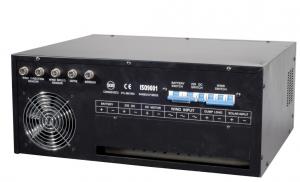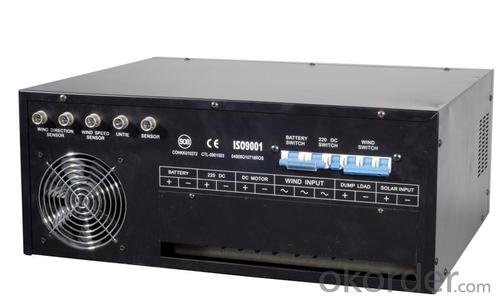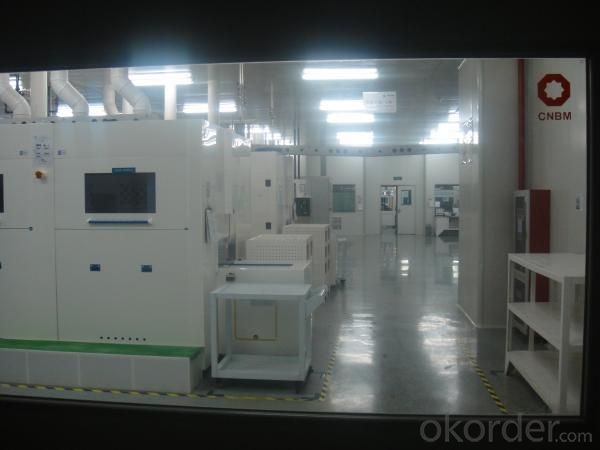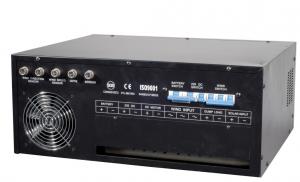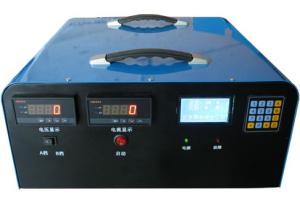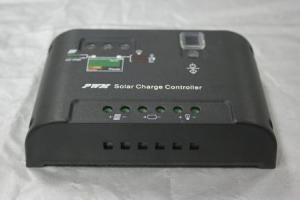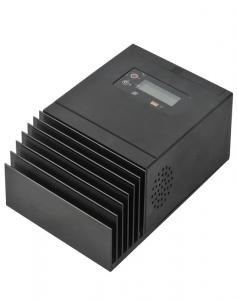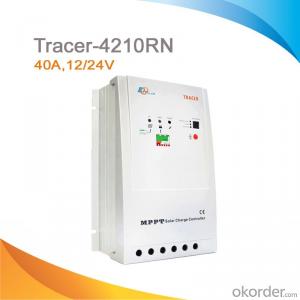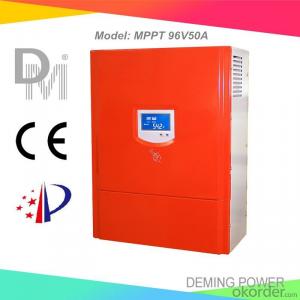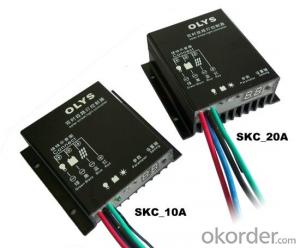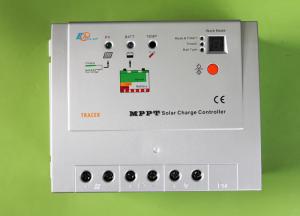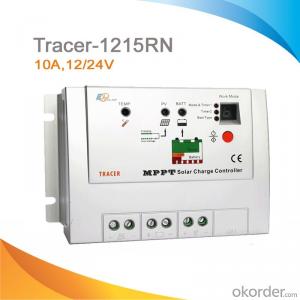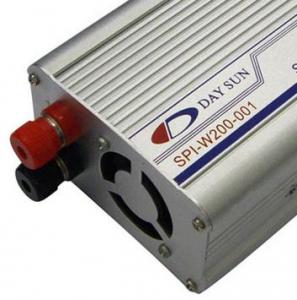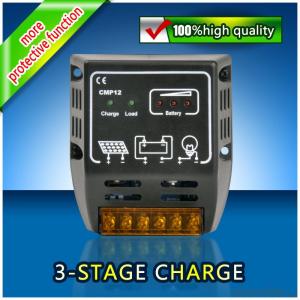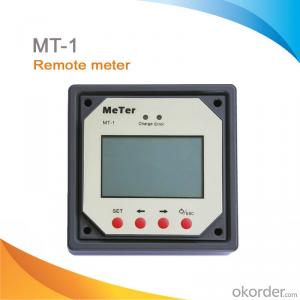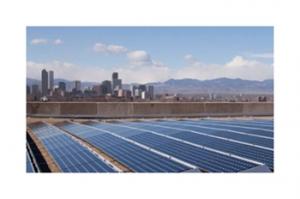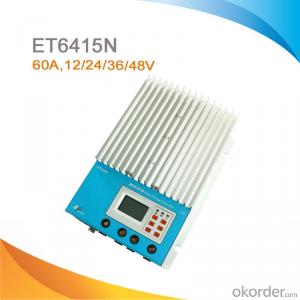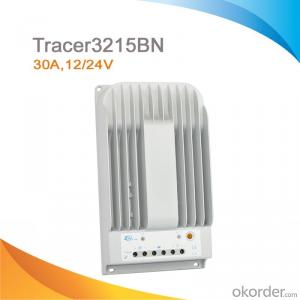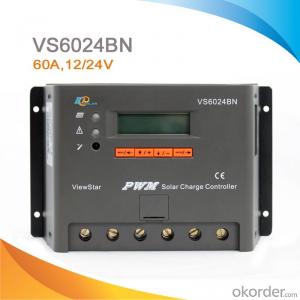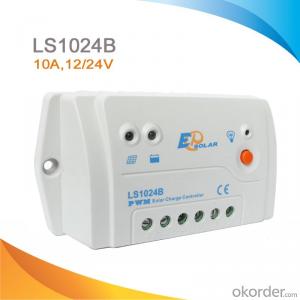Zale Solar Charge Controllers - High Quality Solar Controller Tracer-4210RN
- Loading Port:
- China Main Port
- Payment Terms:
- TT
- Min Order Qty:
- 1 unit unit
- Supply Capability:
- 1000 units per month unit/month
OKorder Service Pledge
OKorder Financial Service
You Might Also Like
Introduction of High Quality Solar Controller Tracer-4210RN
Tracer-4210RN solar controller is our new generation controller for off-grid solar system, such as street light, solar home system or small power station etc.Tracer-4210RN has LCD display, reliable battery charging, full electronic protection, programmable parameters and other features and powerful function.
Our factory is highly recognized by its business partners and clients all over the world and has obtained rapid development under the spirit of win-win .With Solar Controller Tracer-4210RN,We will carry on the mutual beneficial,innovative and revolutionary trading structure as we did before,create value for our employees,share holders and clients and benefit the whole society in our future development.Please contact us ,if you have interest in Solar Controller Tracer-4210RN,don’t hesitate!
Features of High Quality Solar Controller Tracer-4210RN
·MPPT technology
·Peak conversion efficiency of 97%
·High Tracking efficiency of 99%
·Several seconds tracking speed
·4-Stage charge with PWM output
·Nature convection cooling
·Full power output in ambient temperature up to 45 ℃
·Temperature compensation
·Sealed, Gel and Flooded battery option
·Widely used, automatically recognize day/night
·Diversified load control
·RJ45 interface &optional meter
·2 years warranty
·CE certificate
Electronic Protections of High Quality Solar Controller Tracer-4210RN
·Overheating
·Over discharging
·Over charging
·Load overload
·Load short circuit
·PV reverse polarity
·Battery reverse polarity
Data Sheet of High Quality Solar Controller Tracer-4210RN | |
Model | Tracer-4210RN |
Rated system voltage | 12/24V auto work |
Rated battery current | 40A |
Rated load current | 20A |
Max.battery voltage | 32V |
Max.PV open circuit voltage | 100VDC |
Max.PV input power | 12V 520W;24V 10400W |
Self-consumption | <10mA(24V) |
Charge Circuit Voltage | <=0.26V |
Discharge Circuit Voltage Drop | <=0.15V |
Communication | TTL232/8 pin RJ45 |
Temp/compensation | -30mV/℃/12V(25℃) |
Working temperature | -35℃~+55℃ |
Storage temperature range | -35℃~+80℃ |
Humidity | 10%-90% NC |
Enclosure | IP 30 |
Altitude | <=3000m |
Dimension | 242mm *169 mm *91mm |
Mounting holes | 180mm *160 mm |
Mounting hole size | Φ5 |
Weight | 2.05kg |
Factory Picture of High Quality Solar Controller Tracer-4210RN
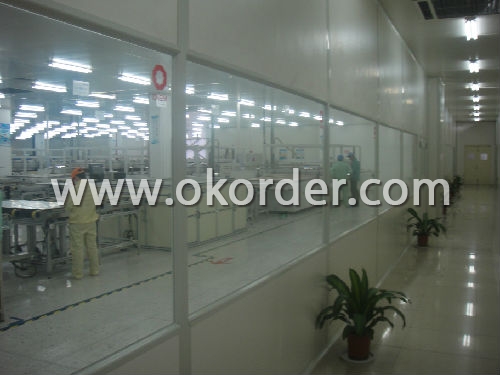
Package Picture of High Quality Solar Controller Tracer-4210RN
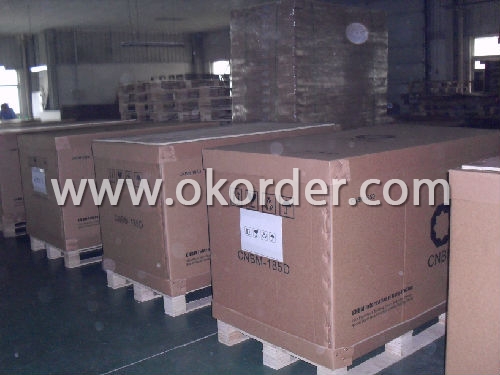
- Q: What is the maximum input current for a solar controller with an LCD display?
- The maximum input current for a solar controller with an LCD display would depend on the specific model and its design specifications. It is recommended to consult the product manual or contact the manufacturer for accurate information regarding the maximum input current for a particular solar controller.
- Q: What is the role of temperature compensation in a solar controller?
- The role of temperature compensation in a solar controller is to adjust and regulate the charging and discharging of the batteries based on the temperature conditions. This is important because temperature affects the performance and lifespan of the batteries. By compensating for temperature variations, the solar controller ensures optimal charging and prevents overcharging or undercharging, which can damage the batteries.
- Q: Can a solar controller be used with a solar-powered agricultural irrigation system?
- Yes, it is possible to utilize a solar controller in conjunction with a solar-powered agricultural irrigation system. The primary purpose of a solar controller is to regulate and optimize the performance of various components within a solar power system, such as solar panels, batteries, and other elements. Its main function is to manage the charging and discharging of batteries, control the flow of electricity, and ensure efficient energy utilization. When it comes to a solar-powered agricultural irrigation system, a solar controller can play a vital role in maintaining the system's proper functioning. It achieves this by monitoring the energy production from the solar panels and regulating the charging of batteries, thus ensuring a consistent and reliable power supply. This becomes especially significant for irrigation systems, as they often necessitate an uninterrupted power source to facilitate water pumping and the operation of other components. Moreover, a solar controller can also assist in controlling the timing and duration of irrigation cycles. It can be programmed to activate the irrigation system during specific daylight hours when solar energy production is at its peak. This approach effectively maximizes the utilization of solar power and diminishes reliance on grid electricity or backup generators. In summary, a solar controller is an invaluable component within a solar-powered agricultural irrigation system, as it enhances the efficiency, reliability, and sustainability of the overall system.
- Q: Can a solar controller be used with solar panels of different sizes?
- Yes, a solar controller can be used with solar panels of different sizes. A solar controller is responsible for regulating the charge from the solar panels to the battery bank or load, and it does not depend on the size of the solar panels. However, it is important to ensure that the solar controller is compatible with the voltage and current produced by the solar panels. The solar controller should have the appropriate specifications to handle the maximum voltage and current generated by the solar panels, regardless of their size.
- Q: What is the temperature rating of a solar controller?
- A solar controller's temperature rating usually specifies the optimal temperature range within which it operates efficiently and effectively. This rating varies depending on the model and manufacturer, but generally falls between -20°C to 55°C (-4°F to 131°F). It is crucial to take this rating into account when choosing a solar controller for your system, as using it outside of the recommended temperature range may result in decreased performance or even controller damage.
- Q: Can a solar controller be used with solar panel fire detection systems?
- Yes, a solar controller can be used with solar panel fire detection systems. A solar controller is responsible for regulating the voltage and current that flows between the solar panels and the battery or load. It ensures that the solar panels are operating at their optimum level and protects the system from overcharging or undercharging. In the context of solar panel fire detection systems, the solar controller can play a crucial role in managing the power supply to the detection system. It can ensure that the solar panels are generating enough power to operate the detection system effectively while also preventing any damage to the system due to overvoltage or power fluctuations. Additionally, a solar controller with advanced features such as temperature monitoring and fault detection can provide an added layer of safety to the fire detection system. It can detect any anomalies or malfunctions in the solar panels or the overall system and take necessary actions to prevent any potential fire hazards. Therefore, integrating a solar controller into a solar panel fire detection system can enhance its performance, efficiency, and safety by ensuring proper power management and protection.
- Q: How does a solar controller handle fluctuating solar panel output?
- A solar controller handles fluctuating solar panel output by regulating the flow of electricity from the panels to the batteries or the electrical grid. It continuously monitors the voltage and current produced by the panels and adjusts the charging parameters accordingly to ensure optimal charging efficiency and prevent overcharging or damage to the batteries.
- Q: Can a solar controller be used with solar panels that are connected in parallel?
- Solar panels that are connected in parallel can indeed be used with a solar controller. In this configuration, the positive terminals of all the panels are connected together, as are the negative terminals. This setup allows for the combined voltage output of the panels while maintaining the same current output. The purpose of a solar controller is to regulate the charging process of batteries that are connected to the solar panels. It serves to prevent overcharging and damage to the batteries. To do so, the solar controller measures the voltage and current from the panels and adjusts the charging process accordingly. Regardless of whether the solar panels are connected in series or parallel, the solar controller can effectively monitor and regulate the charging process. It will measure the combined voltage and current from the parallel-connected panels and adjust the charging parameters accordingly. However, when connecting solar panels in parallel, it is crucial to ensure that the solar controller and the wiring used can handle the increased current. The total current output of the parallel-connected panels will be the sum of the individual panel currents, so the wiring and solar controller must be capable of handling this increased load. To conclude, solar panels connected in parallel can be used with a solar controller. The solar controller will continue to effectively regulate the charging process while ensuring optimal battery performance and longevity.
- Q: What is the maximum power consumption of a solar controller?
- The maximum power consumption of a solar controller can vary depending on its specific design and features. Generally, the power consumption of a solar controller is quite low, typically ranging from a few milliwatts to a few watts. This low power consumption allows the controller to efficiently regulate and manage the energy flow from the solar panels to the battery or load.
- Q: Can a solar controller be used in marine applications?
- The utilization of a solar controller in marine applications is indeed feasible. A solar controller, also referred to as a charge controller, plays a vital role in regulating the flow of electricity from solar panels to batteries. Its main function is to ensure the efficient charging of batteries while preventing any potential damage caused by overcharging. In marine scenarios, where a dependable and efficient power source is often required, solar panels offer a commendable alternative to conventional sources like generators or shore power. By harnessing the sun's energy, solar panels have the ability to generate electricity, making them highly suitable for boats or yachts that frequently venture out to sea. To guarantee the proper charging of batteries and optimal performance of solar panels, the presence of a solar controller is crucial in marine applications. Not only does it safeguard the batteries from the risks associated with overcharging, such as decreased battery lifespan and potential safety hazards, but it also ensures that the solar panels are functioning at their best. Moreover, modern solar controllers are specifically designed to endure the rigorous marine environment, which includes exposure to saltwater, humidity, and vibrations. They are typically constructed using corrosion-resistant materials and possess waterproof or weatherproof ratings to withstand these challenging conditions. To summarize, a solar controller can be effectively and safely utilized in marine applications, offering a reliable and environmentally friendly power source for boats, yachts, and other marine vessels.
1. Manufacturer Overview
| Location | Shenzhen,China |
| Year Established | 2009 |
| Annual Output Value | Above US$12 Million |
| Main Markets | Europe;North America;Afirca |
| Company Certifications | ISO 9001:2008;CQC;CE |
2. Manufacturer Certificates
| a) Certification Name | |
| Range | |
| Reference | |
| Validity Period |
3. Manufacturer Capability
| a) Trade Capacity | |
| Nearest Port | Shenzhen,China |
| Export Percentage | 0.6 |
| No.of Employees in Trade Department | 46 People |
| Language Spoken: | English;Chinese;Spanish |
| b) Factory Information | |
| Factory Size: | Above 300,00 square meters |
| No. of Production Lines | Above 4 |
| Contract Manufacturing | OEM Service Offered;Design Service Offered |
| Product Price Range | Average |
Send your message to us
Zale Solar Charge Controllers - High Quality Solar Controller Tracer-4210RN
- Loading Port:
- China Main Port
- Payment Terms:
- TT
- Min Order Qty:
- 1 unit unit
- Supply Capability:
- 1000 units per month unit/month
OKorder Service Pledge
OKorder Financial Service
Similar products
Hot products
Hot Searches
Related keywords
